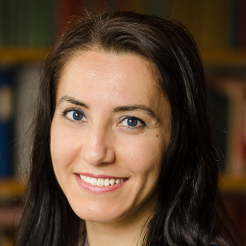Cell-Biomaterial Interactions: Vol II
A special issue of Bioengineering (ISSN 2306-5354).
Deadline for manuscript submissions: closed (31 August 2021) | Viewed by 6404
Special Issue Editors
Interests: synthesis and modification of polymeric biomaterials; tissue engineering; multi-component drug delivery systems; in vitro tissue and disease models
Special Issues, Collections and Topics in MDPI journals
Interests: tissue engineering; biomaterials; bioactive factor delivery; stem cells; regenerative medicine
Interests: biomaterials; tissue engineering; cardiovascular diseases; biomineralization; wound healing; additive manufacturing; point of care diagnostics
Special Issues, Collections and Topics in MDPI journals
Special Issue Information
The native extracellular matrix provides dynamic and spatially heterogeneous microstructural, mechanical, and compositional cues that can influence cell behavior. The ability to mimic such complex in vivo cell-microenvironmental interactions is essential to the success of an implant biomaterial. To direct and control cell behavior, surface modification methods have been developed for scaffolds where cell contact is expected primarily at the scaffold surface. As tissue engineering research has progressed with three-dimensional scaffolds, the ability to promote cellular in-growth and/or sustain the growth of cells already incorporated into the scaffold must be considered. New strategies will be required to address such challenges. Innovative approaches to engineer cell-biomaterial interactions may be utilized to regulate three-dimensional orientation and architecture of cells, control cell-cell contact and communication with microscale resolution, and direct cell behavior to achieve appropriate biological function.
For this second volume of the Special Issue on “Cell-Biomaterial Interactions” (Vol I), we are inviting original research papers and comprehensive reviews on all innovative developments that provide fundamental insights about cell-biomaterial interactions including, but not limited to, the following topics:
- Integration of microstructural, mechanical, and compositional cues for engineering complex tissue systems
- Substrate guided stem cell behavior
- Interactions of specific cell types with materials
- Modification of three-dimensional biomaterial scaffolds by grafting and patterning of small molecules, polymers, and/or ligands
- Characterization methods to ascertain a successfully modified three-dimensional scaffold and cellular interactions with such scaffolds
- New developments in materials that are responsive to environmental cues (e.g., temperature, pH, mechanical or electrical stimuli, or cellular products)
Prof. Amol Janorkar
Prof. Dr. Eben Alsberg
Dr. Gulden Camci-Unal
Guest Editors
Manuscript Submission Information
Manuscripts should be submitted online at www.mdpi.com by registering and logging in to this website. Once you are registered, click here to go to the submission form. Manuscripts can be submitted until the deadline. All submissions that pass pre-check are peer-reviewed. Accepted papers will be published continuously in the journal (as soon as accepted) and will be listed together on the special issue website. Research articles, review articles as well as short communications are invited. For planned papers, a title and short abstract (about 100 words) can be sent to the Editorial Office for announcement on this website.
Submitted manuscripts should not have been published previously, nor be under consideration for publication elsewhere (except conference proceedings papers). All manuscripts are thoroughly refereed through a single-blind peer-review process. A guide for authors and other relevant information for submission of manuscripts is available on the Instructions for Authors page. Bioengineering is an international peer-reviewed open access monthly journal published by MDPI.
Please visit the Instructions for Authors page before submitting a manuscript. The Article Processing Charge (APC) for publication in this open access journal is 2700 CHF (Swiss Francs). Submitted papers should be well formatted and use good English. Authors may use MDPI's English editing service prior to publication or during author revisions.








